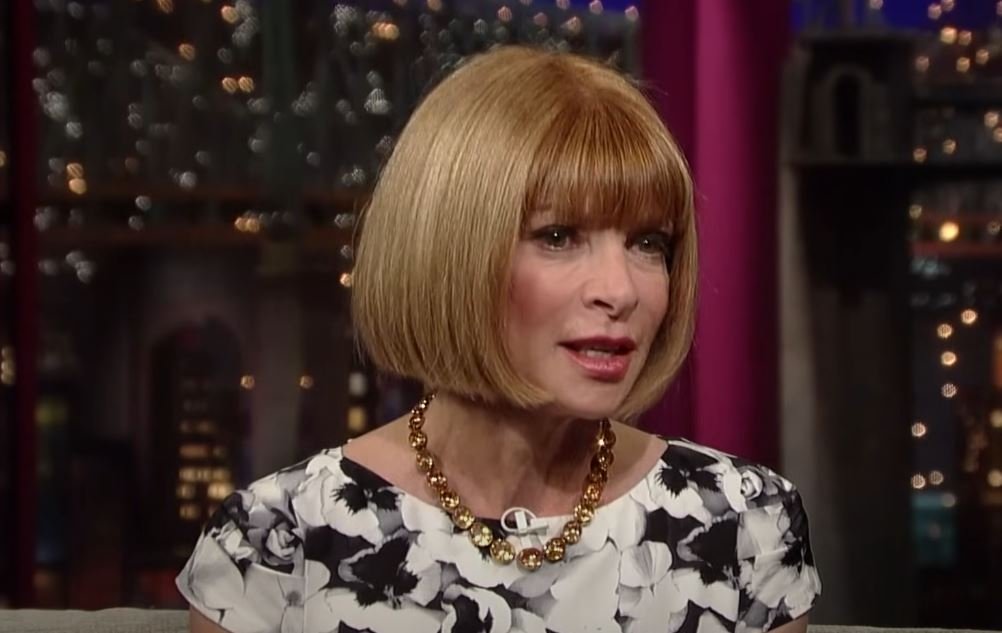
The $50 million fortune that Anna Wintour now possesses did not come about suddenly. It was gradually developed via perseverance, accuracy, and a keen sense of timing, influence, and flavor. Although she has been with Vogue for almost 40 years, her influence is still growing, extending into areas of luxury, philanthropy, fashion, and media that few have ever fully grasped.
In 2025, Wintour left her renowned position as editor-in-chief to take on a more expansive role as global chief content officer for Condé Nast. This change represents a well-timed expansion rather than a retreat. She now has a greater audience thanks to her influence on the editorial direction of prominent magazines like Vanity Fair, Architectural Digest, and GQ. Her pay structure, which is still based on a base salary of $4 million, is still strong and is further reinforced by benefits that are extraordinarily opulent by any measure.
Anna Wintour – Personal and Professional Snapshot
| Full Name | Anna Wintour |
|---|---|
| Date of Birth | November 3, 1949 |
| Nationality | British-American |
| Net Worth (2025) | $50 million |
| Key Positions Held | Editor-in-Chief, Vogue (1988–2025); Global Chief Content Officer at Condé Nast |
| Known For | Fashion influence, Met Gala chair, publishing leadership |
| Estimated Annual Salary | $4 million (plus perks and allowances) |
| Real Estate Holdings | NYC townhouse (valued $11–17M), Long Island estate (42 acres) |
| Honors | Dame Commander of the Order of the British Empire, Companion of Honour |
These benefits create a powerful image of the pinnacle of fashion. Her yearly clothing allowance for work attire is $200,000. Every day, Condé Nast completely covers her hair and makeup. She still has access to chauffeured Mercedes cars. She stays in five-star hotels, such as the Coco Chanel Suite at the Ritz Paris, when she travels for work, particularly during fashion weeks. Her financial situation is significantly improved by these fringe benefits, which are worth more than half a million dollars a year.
However, pay and benefits are only one aspect of her income. Wintour’s real estate holdings demonstrate an especially astute strategy. Her iconic Greenwich Village townhouse in New York, which she bought decades ago, is currently valued at up to $17 million. An additional $2 to $3 million is added to her net worth by her Long Island estate, which is encircled by 42 acres of serene gardens and waterfront peace. In addition to being stunning, these houses have seen substantial appreciation, making them incredibly resilient pieces in her portfolio.
Under her direction, the Met Gala has evolved over the last two decades from a conventional charity function to the most glamorous night in fashion. She has contributed to the Costume Institute’s yearly fundraising of over $75 million through carefully selected guest lists and business alliances. Even though she doesn’t get paid for her work at the event, the international recognition and connections it creates greatly expands her financial and cultural influence.
Advisory positions and board memberships provide an additional avenue for influence and, occasionally, revenue. She has a strategic and symbolic relationship with organizations such as the Metropolitan Museum of Art. She commands over $100,000 per appearance through speaking engagements, which reflects her authority and the desire of brands to capitalize on her sophisticated aura. Even though she takes a break from daily editorial management, these opportunities enable her to consistently increase her visibility.
The way she has combined fashion and cultural power is what makes her wealth-building strategy so unique. Wintour’s vision jumped off newsstands, but most editors try to keep their influence within pages. Before it became the norm, she fought for the use of celebrities on covers. By supporting up-and-coming designers like Marc Jacobs and Alexander McQueen, whose names now dominate runways worldwide, she broke down barriers. She always took a very strategic approach to fashion, always timing it to coincide with changes in culture and marketing trends.
A three-pronged system of cultural relevance is formed by the Met Gala, Vogue’s international editions, and her charitable endeavors. She has provided direct funding and mentorship to dozens of up-and-coming designers through the CFDA/Vogue Fashion Fund. She has raised more than $10 million through AIDS fundraising efforts, using editorial real estate to draw attention to advocacy just as much as fashion. These efforts have significantly raised fashion’s profile as more than just a glamorous industry.
It’s common to misunderstand her reputation for having high standards, which were famously depicted in The Devil Wears Prada. Although her personality has been described as cold, people who work closely with her say she is an exceptionally helpful mentor. Her dedication to developing talent pipelines and mentoring aspiring editors at Condé Nast demonstrates a longer-term commitment to the creative economy. She is creating a legacy that endures and adapts, not just preserving it.
Wintour has established herself as the most dependable figure in fashion by sticking to her signature look, which includes blunt bobs, oversized sunglasses, and simple couture. Beneath the meticulously maintained appearance, however, is a very effective and subtly aggressive financial plan. In addition to creating Vogue, she changed the definition of what an editor could be by making them a business architect, philanthropist, real estate investor, and cross-industry executive.
It is anticipated that her wealth will increase gradually over the next few years. Wintour’s compensation model continues to be very lucrative, especially with global oversight, as real estate values continue to rise and Condé Nast’s portfolio diversifies across digital platforms. Her influence hasn’t diminished since she left Vogue’s daily operations; on the contrary, it has expanded her perspective.
More than just a reputation, Anna Wintour has established a blueprint through her strategic brand-building, unwavering work ethic, and unique understanding of what appeals to both elites and general readers. She has a net worth of $50 million that goes beyond money. It is the result of decades of deftly negotiating business hallways, cultural fads, and international stages.
